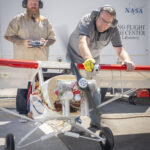Benthic (adjective, “BEN-thik”)
The word “benthic” refers to the bottom of a body of water, such as an ocean, lake or stream. The word comes from the Greek term “benthos,” which means “deep of the sea.” Ecologists contrast the benthic zone with the pelagic zone. That’s the open water region where fish and whales swim.
Imagine wading into a stream. You are walking on the benthic zone — the bottom of a body of water. Some benthic zones, such as the bottom of a lake, river or salt marsh, are shallow. Sunlight can cut through shallow water in these wetlands. That’s important because sunlight — which powers photosynthesis — allows plants to grow in these habitats.
But some parts of the ocean are so deep that sunlight doesn’t reach the bottom. Scientists used to think nothing could survive in such a deep, dark place. But expeditions to the deep ocean floor show just the opposite. Parts of the ocean floor have thriving ecosystems thousands of meters below the surface. Even deep sea sediments are home to unique microbes.
Deep or shallow, the benthic zone teems with life. In freshwater habitats, crayfish, worms, snails and insect larvae call the benthic zone home. In ocean and coastal habitats, you’ll find seagrass, lobsters, sea stars and more. And the deepest parts of the ocean? There you’ll find unique ecosystems that don’t require sunlight and photosynthesis for energy.
Organisms in the benthic zone help the entire ecosystem. Many decomposers — especially microbes — live in the benthic layer. When dead animals or plants sink to the bottom of a lake or ocean, decomposers break them down. That recycles the dead matter and makes the minerals available for other forms of life. In the process, some microbes make a gas called hydrogen sulfide. That’s the same gas that gives rotten eggs — and some swamps and marshes — their funky smell.
In a sentence
Die-offs of some benthic life, such as coral, serve as indicators of climate tipping points.




